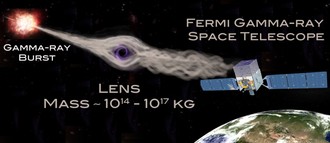
Dark matter is one of the most challenging open problems in cosmology and particle physics. Although currently the weakly interacting massive particles (WIMPs) seems to be favoured as a possible constituent of the dark matter, the alternative idea that the missing matter consists of compact astrophysical objects was also proposed as early as in the 1970s (B. J. Carr and S. W. Hawking, Mon. Not. R. Astron. 313 Soc. 168, 399 (1974)). An example of such compact objects might be primordial black holes (PBHs) created in the very early Universe from matter density perturbations. The abundance of primordial black holes is currently significantly constrained in a wide range of masses. The weakest limits are established for the small mass objects, where the small intensity of the associated physical phenomenon provides a challenge for current experiments. To derive the constraints on the small compact object abundance astronomers Anna Barnacka and Rafał Moderski of NCAC and J.-F. Glicenstein have searched for a femtolensing effect in the spectra of gamma-ray bursts with known redshifts detected by the Gamma-ray Burst Monitor (GBM) on board the FERMI satellite. The research involved an analysis of the FERMI data, which has been used to estimate the femtolensing effect detectability on certain mass and lens position ranges. Lack of detection of the femtolensing effect has provided new constraints on the PBHs fraction in the mass range 1017 − 1020 g, which is less than 3% of critical cosmic matter density at 95% confidence level (Barnacka et al. 2012). For this research Anna Barnacka has been awarded Copernicus Center Young Researcher Award for 2012.
The picture presents a chematic view of femtolensing.






